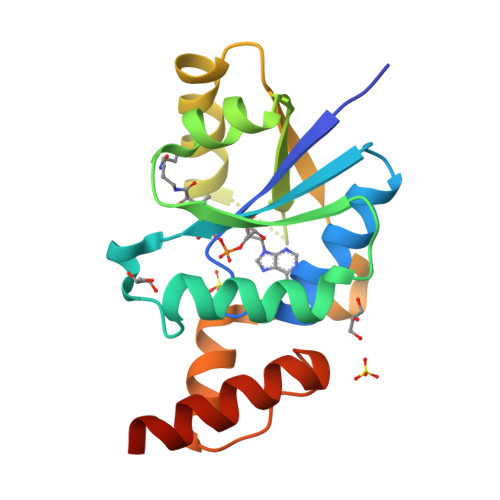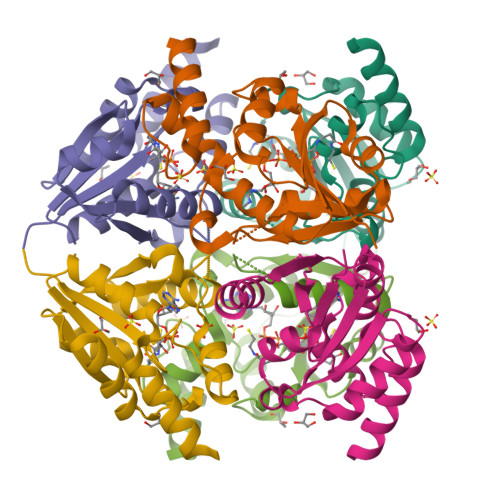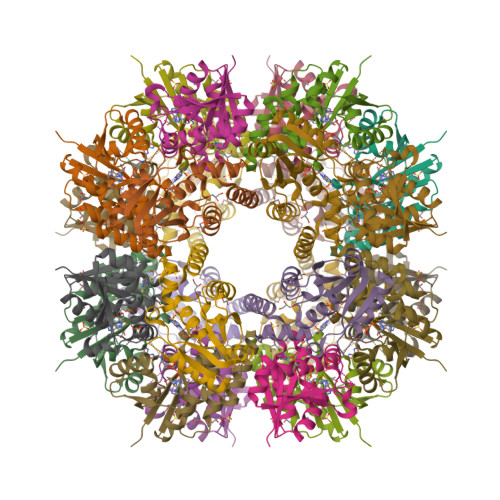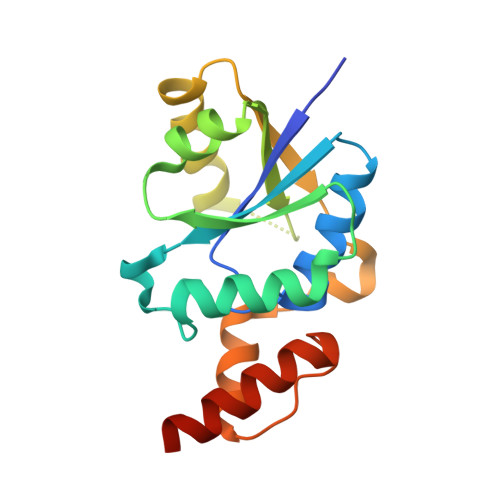Structures of phosphopantetheine adenylyltransferase from Burkholderia pseudomallei.
Edwards, T.E., Leibly, D.J., Bhandari, J., Statnekov, J.B., Phan, I., Dieterich, S.H., Abendroth, J., Staker, B.L., Van Voorhis, W.C., Myler, P.J., Stewart, L.J.(2011) Acta Crystallogr Sect F Struct Biol Cryst Commun 67: 1032-1037
- PubMed: 21904046
- DOI: https://doi.org/10.1107/S1744309111004349
- Primary Citation of Related Structures:
3K9W, 3PXU - PubMed Abstract:
Phosphopantetheine adenylyltransferase (PPAT) catalyzes the fourth of five steps in the coenzyme A biosynthetic pathway, reversibly transferring an adenylyl group from ATP onto 4'-phosphopantetheine to yield dephospho-coenzyme A and pyrophosphate. Burkholderia pseudomallei is a soil- and water-borne pathogenic bacterium and the etiologic agent of melioidosis, a potentially fatal systemic disease present in southeast Asia. Two crystal structures are presented of the PPAT from B. pseudomallei with the expectation that, because of the importance of the enzyme in coenzyme A biosynthesis, they will aid in the search for defenses against this pathogen. A crystal grown in ammonium sulfate yielded a 2.1 Å resolution structure that contained dephospho-coenzyme A with partial occupancy. The overall structure and ligand-binding interactions are quite similar to other bacterial PPAT crystal structures. A crystal grown at low pH in the presence of coenzyme A yielded a 1.6 Å resolution structure in the same crystal form. However, the experimental electron density was not reflective of fully ordered coenzyme A, but rather was only reflective of an ordered 4'-diphosphopantetheine moiety.
Organizational Affiliation:
Seattle Structural Genomics Center for Infectious Disease (SSGCID), USA. tedwards@embios.com




















